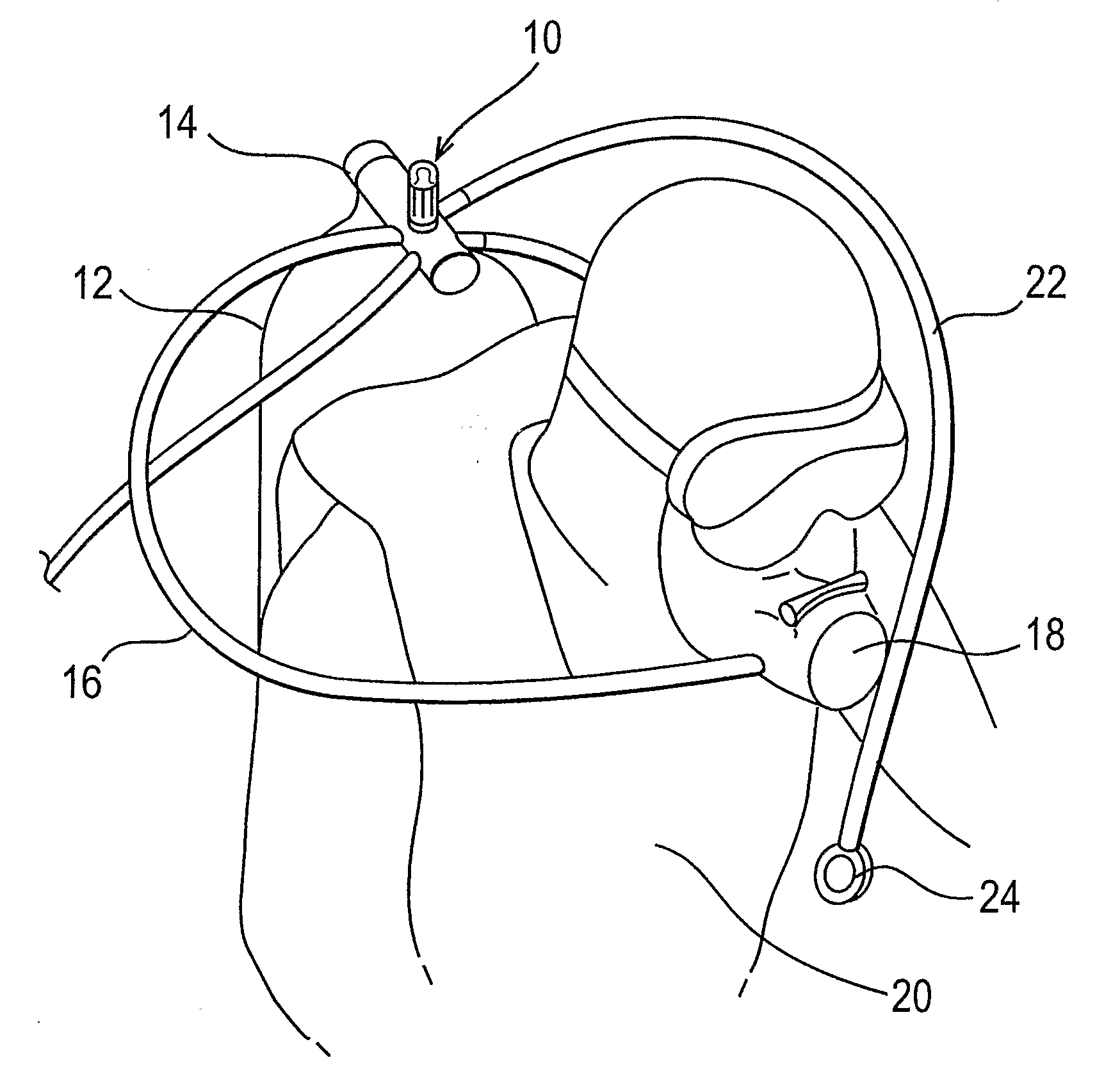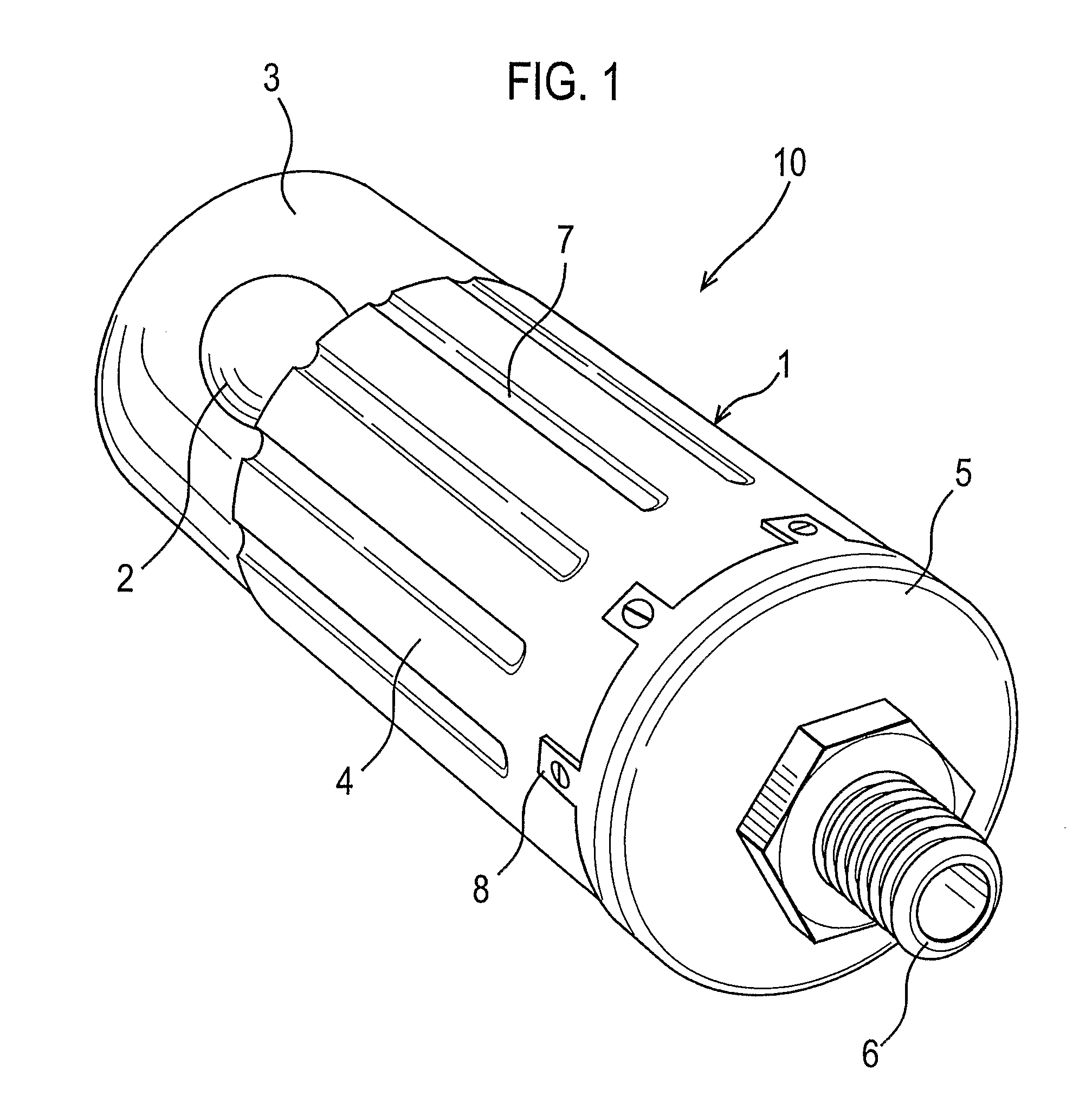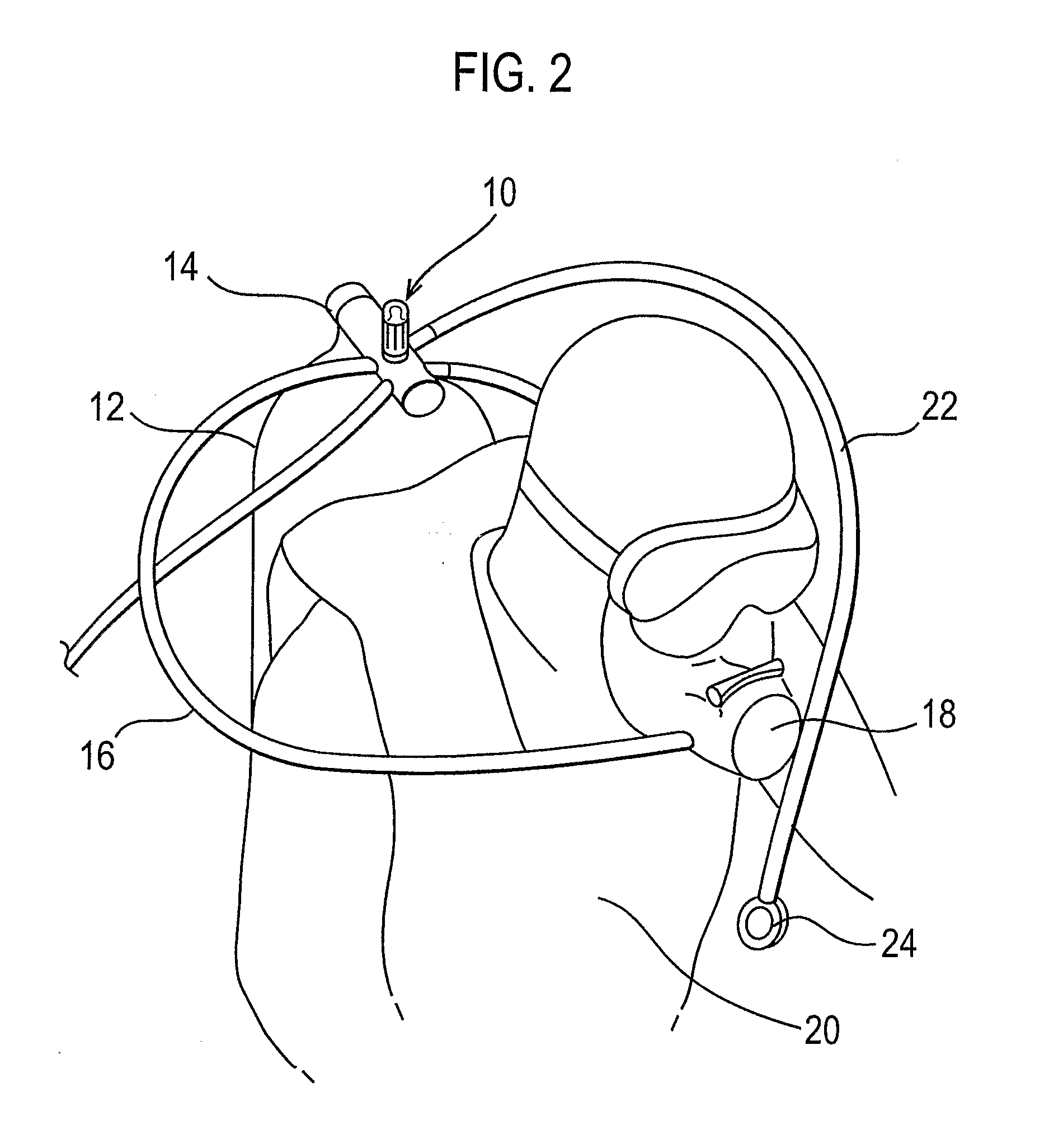Warning System
a technology of warning system and warning valve, which is applied in the direction of underwater equipment, underwater instruments, waterborne vessels, etc., can solve the problems of divers learning to dive without advising their instructors, instructors will not know when any of the divers are running low of breathable gas, and one or more divers in the party may run out of breathable gas while underwater
- Summary
- Abstract
- Description
- Claims
- Application Information
AI Technical Summary
Benefits of technology
Problems solved by technology
Method used
Image
Examples
Embodiment Construction
[0018]As best shown in FIG. 2, a SCUBA diver 20 will wear a SCUBA diving tank 12 on his back. The diving tank 12 contains a compressed breathable gas, hereinafter referred to as compressed air. The regulator 14 is provided on the tank, and controls the supply of air from the tank to a mouthpiece 18 via a connecting tube 16. The regulator 14 has a low pressure output port to which the connecting tube 16 is coupled, and reduces the high-pressure of the compressed air contained within the tank 12 to a lower pressure for supply to the mouthpiece 18. The regulator 14 also includes a high-pressure output port to which a pressure gauge 24 may be coupled via a tube 22. The pressure gauge 24 gives a visual indication to the diver of the pressure of compressed air within the tank.
[0019]As shown in FIG. 2, a warning system 10 according to the present invention is connected directly to another high-pressure output port of the regulator 14. When the pressure within the tank falls below predeterm...
PUM
 Login to View More
Login to View More Abstract
Description
Claims
Application Information
 Login to View More
Login to View More - R&D
- Intellectual Property
- Life Sciences
- Materials
- Tech Scout
- Unparalleled Data Quality
- Higher Quality Content
- 60% Fewer Hallucinations
Browse by: Latest US Patents, China's latest patents, Technical Efficacy Thesaurus, Application Domain, Technology Topic, Popular Technical Reports.
© 2025 PatSnap. All rights reserved.Legal|Privacy policy|Modern Slavery Act Transparency Statement|Sitemap|About US| Contact US: help@patsnap.com



